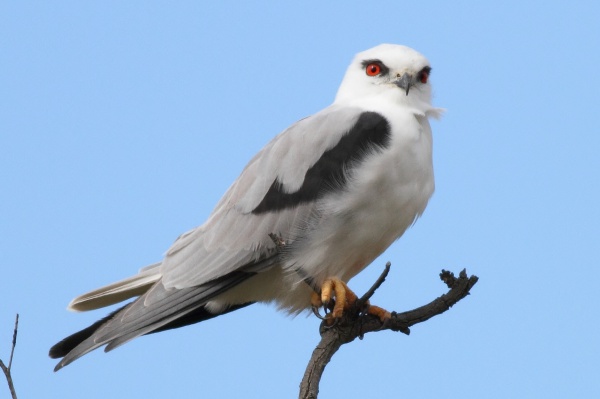Facts About Black-shouldered kite
The black-shouldered kite, also known as the Australian black-shouldered kite, is a small bird of prey commonly found across Australia, particularly in open habitats. This sleek raptor measures approximately 35 cm in length, with a wingspan ranging between 80 and 100 cm. Its plumage is predominantly grey-white with striking black markings on its wings.
These birds form monogamous pairs and typically breed from August to January. During this period, they engage in impressive aerial courtship displays. A typical clutch consists of three to four eggs, which are incubated for about 30 days. Remarkably, the chicks are fully fledged within five weeks and can start hunting for mice within a week of leaving the nest.
Historically, there was some debate over the taxonomy of the black-shouldered kite, but it is now accepted as a monotypic species within the Elaninae subfamily of the Accipitridae family. Although it resembles the letter-winged kite, it can be distinguished by its unique markings and coloration. The black-shouldered kite primarily preys on small rodents, especially house mice, and thrives in agricultural landscapes. It is currently classified as "Least Concern" on the IUCN Red List.
You can usually spot black-shouldered kites in open grasslands, where they hover and scan the ground for prey. These birds are either sedentary or nomadic and can adapt to various habitats, including urban areas, coastal dunes, and marshlands. When food is scarce, they become territorial and typically hunt alone or in pairs. However, during times of abundance, they may form small family groups.
The population of black-shouldered kites has benefited from land clearing and agricultural practices that create ideal conditions for their prey. Consequently, they are one of the most frequently recorded raptors in certain regions of Australia. Although they were not affected by eggshell thinning during the DDT era, there are concerns about potential secondary poisoning from rodenticides or pesticides used in pest control.
